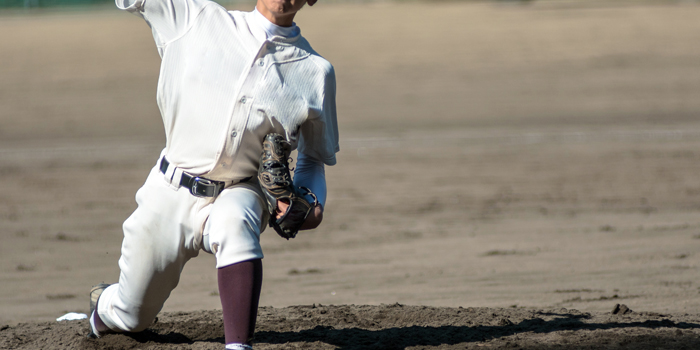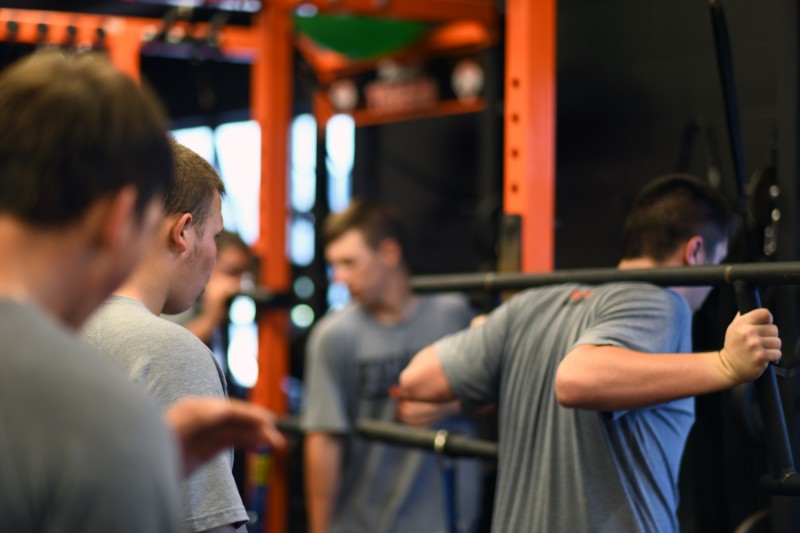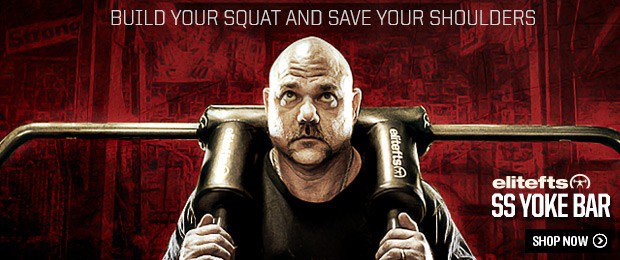
Let me start by saying that specialty bars, as awesome and useful as they are, are not necessary for athlete success. However, if one has access to them, they can be immensely valuable in keeping athletes strong, mobile, and most importantly, healthy through both the off-season and the competitive season.
However, as with all things in strength and conditioning, there must be purpose and reason behind their application and use, and they should not be programmed and implemented simply on a whim.
I am fortunate enough to work at a program that has access to a number of specialty bars. As such, my training vocabulary is much broader than it might otherwise be, and we can do more for our athletes over the course of a year in terms of keeping them strong, mobile, and as healthy as possible. We rotate through a selection of specialty bars as needs dictate, depending on where we are in the season and how my athletes feel.
RELATED: Specialty Bars and Sports Programming
Baseball and softball are two sports that are fairly similar, at least from an anatomical and physiological perspective. I am not a physiologist or kinesiologist, so I won’t dare to venture into the particular mechanics of a pitch or a throw. Still, I can say that both sports are rotational in nature. They require a high degree of mobility and stability through the shoulder, place a great deal of stress on the shoulder and elbow, and require an effective and efficient synchronization of the upper and lower limbs combined with stabilization and power transfer through the core. When we look at the use of specialty bars, I look mostly at the way(s) in which a certain barbell will load the spine and shoulders and if there’s any benefit over a straight bar. For me, especially with a squat, the lower half will be performing the same action regardless of which bar is being used. One bar might require a greater degree of stabilization than another, depending on how proficient the athlete is at the use of that bar, but for the most part, a squat is a squat.
The use of specialty bars for the bench press is also worth exploring with baseball and softball athletes. Again, both sports place a tremendous amount of strain and stress on the shoulders and elbows.
The trap bar is a specialty bar option for the deadlift. It provides a more anterior-loaded movement pattern and seems to be a popular choice among baseball and softball strength coaches.
Beyond why we use specialty bars for our baseball and softball athletes, here's an overview of how we utilize our specialty bars.
Safety Squat Bar
A tried and true alternative to the straight bar is the safety squat bar. It is great for saving an athlete’s shoulders and elbows. The handles are located in the front, allowing the athlete to keep their arms down and reduce stress on their shoulders and elbows. Additionally, the safety squat bar's design forces an athlete to engage their upper back more to prevent rolling over. In the off-season, the safety squat bar is typically reserved for use as a variation or for individuals recovering from surgery but have still been cleared to lift. As we progress deeper into the season, it starts to become more of the default, especially for my pitchers, who tend to experience a greater degree of trauma than position players. The safety squat bar can also be useful for those individuals who find discomfort in supporting a straight bar on their back and shoulders, given the pad. So, it can be a useful segue into the straight bar for those athletes who might require a more delicate touch or approach. The SSB is also great for good mornings, which are a staple in our programming year-round, as well as single-leg work.
Bow Bar
We’ve just recently started using a bow bar in our weight room and our programming. Although it’s still fresh in our training rotation and has yet to really earn its place, I find myself using it more and more consistently.
We use a bow bar with a fairly aggressive camber, so the hands and elbows are in a much lower position than they would be with a straight bar, further reducing the potential stress and strain on the joints of the upper body. For those athletes who need such a reduction, the bow bar is a great tool. For those athletes who are still healthy enough to use a straight bar, the bow bar provides a great alternative and could ultimately lead to less chronic wear and tear on the joints as the season progresses. Also, the load seems to be more evenly distributed across the upper back with the bow bar than the straight bar, making it more comfortable to support heavy loads. However, while I find the bow bar to be nothing but a positive addition to our training rotation, I have received some negative feedback from some of my female athletes who find the bar to be uncomfortable due to how it sits across the bones of the shoulder girdle.
Football Bar
The football bar is great for keeping the shoulders and elbows from getting cranked around by a straight bar. To maintain maximal strength throughout the course of a year, including the competition season, we use the football bar when benching (especially with our pitchers). Our position players, except for those who have a limitation or contraindication, use the straight bar. I like the football bar for its multiple grip options, which allow athletes of different builds to use the grip width that is most appropriate for them while still maintaining the neutral shoulder and wrist position. With only a few different grip options, the football bar is limited in its versatility, at least compared to a straight bar (for benching), but makes up for this with its wide array of possible implementations, including, but not limited to: push-ups, rows, curls, pull-ups, inverted rows, front raises, and triceps extensions.
Trap Bar
I touched on the trap bar above and stand by what I said. I’m not against it, but I believe that athletes are better served by using a straight bar to deadlift. The argument behind the trap bar and its use is that it places the athlete in a more advantageous position relative to the weight and allows the athlete to use their legs more and back less when performing the deadlift. While this is all true, I don’t believe that the straight bar deadlift is inherently dangerous, as long as it’s coached properly. Any exercise can be dangerous, including the trap bar deadlift, if coached improperly or incorrectly. To develop sport-specific transfer of training, the straight bar deadlift, specifically the sumo deadlift, is more appropriate than the close-stance trap bar deadlift. I’m not against using the trap bar when necessary, but I’d rather implement it as a last resort than the default.
Rackable Cambered Bar
In full disclosure, we don’t yet have this in our weight room. However, I have personally used it and believe it would be a great addition to our weight room and any weight room. The rackable cambered bar is a great option because it combines the feel of a straight bar across the shoulders with the shoulder-saving versatility of a safety squat bar or a bow bar. I would implement the rackable cambered bar not only in the off-season as a variation but also during the competition season to save the shoulders and elbows. I love the rackable cambered bar and how the weight sits relative to the center of gravity. It provides immediate feedback to an athlete who is improperly bracing. Plus, as with the safety squat bar, the rackable cambered bar is great for both seated and standing good mornings and can be loaded with both chains and bands effectively.
Fat Gripz
While not a bar, Fat Gripz are great additions to barbells and attachments, given the extra grip work they build and require. Our athletes use Fat Gripz on rows, presses, or even curls. When pressing, the greater surface area displaces the load wider across the palm, reducing acute trauma to the wrist and hands. That’s not to say that every press needs to be a Fat Gripz press, but it’s definitely something worth considering.
There you have it—a brief list of specialty bars that we use in our programming for baseball and softball. Again, specialty bars are not a necessity, and plenty of success can be had with the use of only a straight bar, but if you have access to specialty bars and are not using them, you’re doing yourself and your athletes a disservice. Specialty bars provide a wide array of options for building strength, working around injuries, and creating novelty to drive adherence and buy-in. When available, specialty bars are valuable tools in the kit of any strength and conditioning coach.
Header image credit: mtaira © 123rf.com
 Jim Seratt is a Division-I Strength and Conditioning Coach, 242-pound multi-ply powerlifter, podcaster, and general barbell enthusiast. He can be reached at jseratt@oakland.edu.
Jim Seratt is a Division-I Strength and Conditioning Coach, 242-pound multi-ply powerlifter, podcaster, and general barbell enthusiast. He can be reached at jseratt@oakland.edu.











The straight bar is solely cheap and convenient, and is NEVER THE BEST TOOL for the job.